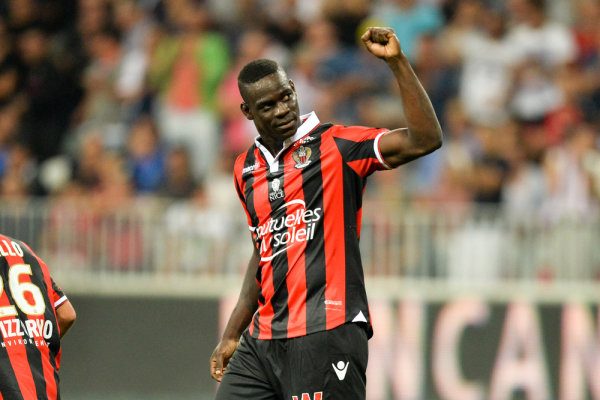Ostersunds: The Lowdown on Arsenal’s Europa League Opponents
Arsenal fans cannot deny they cracked a smile when their side were drawn against Swedish side Ostersunds in the Europa League knock-out stage. The draw could could not have been any kinder to the Gunners. Fans started looking up information on a team, that most never knew existed more than 24 hours ago.
However, is their really a chance of an upset?
For Ostersunds, drawing Arsenal in the last 32 of the Europa League is a prize for the remarkable rise through the Swedish leagues.
The club were only formed in 1996, two years after Arsene Wenger took charge in North London. They began life in the 3rd tier, and spent 13 years in this division, always with targets of promotion. Many managers, including Englishman Neil McDonald, came and went.
Things however took an unexpected turn. In 2010, Ostersunds’ miserable season ended in relegation to the 4th tier. That summer, some decisions were made by chairman Daniel Kindberg, that would begin a glorious 7 years for the club.
A few years prior to relegation, Kindberg had used his close friendship with Roberto Martinez, who was then manager at Swansea. The clubs started a cooperation to enable Ostersunds to loan youngsters from the Swans. Following relegation, Kindberg also ensured there was more backing from local companies. It was far from an Arabian billionaire investment, but it was enough of a financial increase to allow staff to become full time.
Then Kindberg switched attentions to a manager, someone capable of guiding this team straight back up, maybe even to the 2nd tier. The man they brought in was Englishman Graham Potter. He didn’t meet the targets set out by the chairman. In fact, he exceeded them, beyond everyone’s expectations.
Despite an experienced playing career, this was to be Potter’s first ever job in management. He made over 320 appearances for 12 different clubs, in a career spanning 13 years. This included West Brom and Stoke in the mid to late 90’s.
At the time of contact from Kindberg, Potter was at the University in Hull, working as a football development manager. He took up the offer from Norway of a 3 year deal. Very few established English managers make the move abroad, so for Potter, he knew the risk that came with his first ever job, and the assumption that English managers cannot succeed outside of the Premiership.
But he immediately blew that assumption away. Two consecutive promotions, as champions, led the club to the Superettan, in the 2nd tier of Swedish football. In their 3rd season, the dream came true, as they secured promotion to Sweden’s top flight.
Now the aim was just to keep the club at the top. Following record signings and higher attendances, Ostersunds secured an 8th place finish in their first season.
However, Potter led his side to the Swedish Cup final, where they defeated Norrkoping 4-1. This not only secured the clubs first ever silverware, but also secured a place in the Europa League qualifying rounds.
Having already seen off Galatasaray, PAOK, Hertha Berlin and Zorya, Bilbao pipped them to top spot on goal difference in Group J. This has set up the Swedish side’s showdown with Arsenal. And Wenger and his side must realise this won’t be an easy match.
Ostersunds’ best chance will arguably come in the first leg. They are yet to lose at home in their European campaign, and their 8,500 capacity Jamtkraft arena has become a mini fortress.
One reason for this, you could argue, is due to the climate in Northern Sweden. Average temperatures at the time of February’s first leg can reach as low as -8 degrees, sometimes even colder than this. It’s difficult to say what impact this could have on the opposition, but certainly the largely Scandinavian squad will be more comfortable in these conditions than the likes of Alexandre Lacazette and Mesut Ozil.
Ostersunds players are mainly unrecognisable to people outside the country, which you could argue is rare for a team in the last 32 of Europe.
Their captian, Brwa Nouri, has made just over 100 appearances for the side, and is the engine in the middle. He plays for the Iraqi national team. The squad features two English players, both joining Ostersunds having played for non-league sides previously. Curtis Edwards joined from Spennymoor Town, while 2016 player of the year Jamie Hopcutt joined from Tadcaster. Saman Ghoddos is the Iranian striker who will be the most dangerous man to Arsenal’s back line.
Looking through the squad list, the lack of playing time in European club competitions makes this achievement even more remarkable.
The big test will no doubt come at the Emirates, where the large pitch and big stadium will be nothing like Ostersunds have played in before. This is why it’s crucial they take something, even a clean sheet, back to North London with them. Arsenal on their day, as several European teams have found out this season, can open up defences and really turn on the style.
Ostersunds will no doubt enjoy the occasion. But in no way are they here to make up the numbers. Graham Potter and the whole club deserve this test, and this attention. They’ll want to put on a performance they can look back on as brave and fearless, and not one in which they rolled over to Arsenals stars.
For them to knock Arsenal out, would be one of the greatest stories in Swedish football.
Written by Tom Winch
Follow Tom on Twitter @winchy33
Check out more articles from his excellent blog, Row Z
Please like O-Posts on Facebook
You can follow O-Posts on Twitter @OPosts



0 comments